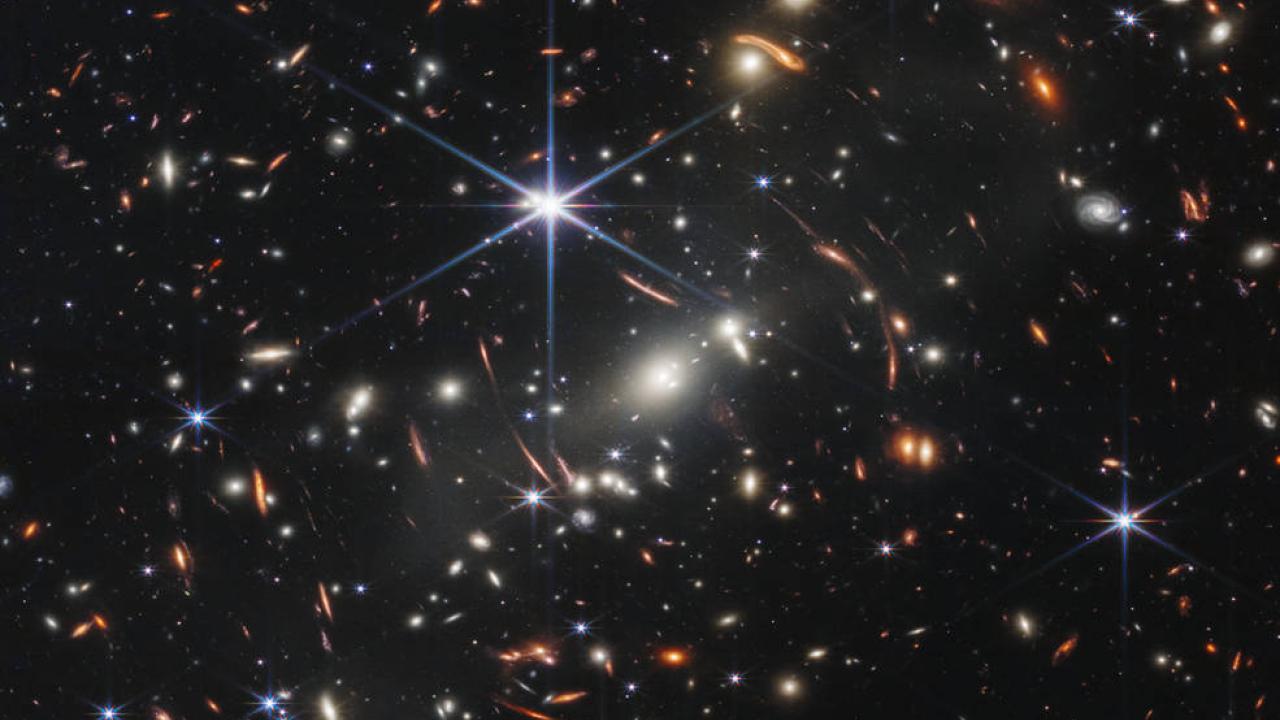The release of the first images from NASA's James Webb Space Telescope this week has scientists and laypeople alike swooning over the quality and beauty of the images. Astronomers are also getting ready to use the JWST in their research projects.
Associate Professor Tucker Jones and postdoctoral research Ryan Sanders, both in the UC Davis Department of Physics and Astronomy, are each leading programs that will make use of the JWST.
Jones is principal investigator of a program to chart the emergence of the first modern disk galaxies in the Universe. Disk galaxies are spiral galaxies such as our own Milky Way. Using the JWST, the team will be able to measure the velocity of material moving around inside galaxies five to ten billion years ago and how it resolved into the spiral arms we see in more modern galaxies.
Jones and colleagues have previously done similar studies of even older galaxies with the Keck Observatory in Hawaii and found that these early galaxies are quite chaotic and turbulent. The JWST will allow them to get much sharper images and look at the period when turbulent galaxies resolved into more ordered structures. They will also be able to look at up to 50 galaxies at the same time.
Sanders, who is also a NASA Hubble Fellow, is co-principal investigator of two programs (GO1657, GO1914) to measure the heavy element content of galaxies in the early universe, within the first billion years after the Big Bang. These observations are essentially impossible to do with ground-based telescopes, because of the effects of the Earth's atmosphere.
It will be a few months before the programs begin observations, Jones said.
"Given what we've seen from the telescope today, it should be spectacular when the data arrive!" he said.
